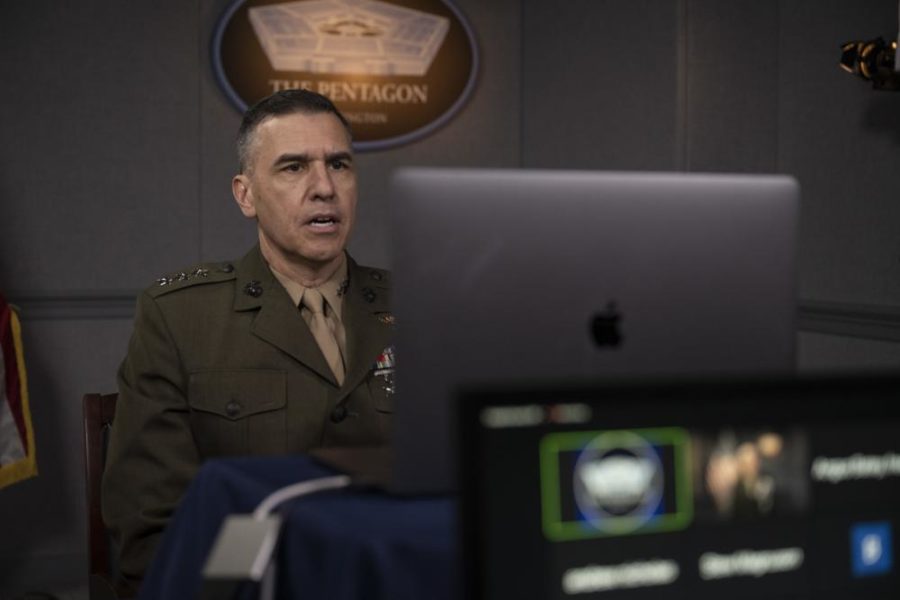More than eight months after Defense Secretary Lloyd J. Austin III signed off on the Defense Department’s strategy for joint all-domain command and control, the Pentagon has an implementation plan for that strategy—and an unclassified version of the strategy for the public to see.
On March 15, Deputy Secretary of Defense Kathleen H. Hicks signed the JADC2 implementation plan, which “details the plans of actions, milestones, and resourcing requirements” and “identifies the organizations responsible for delivering JADC2 capabilities” necessary for the DOD’s ambitious effort to connect sensors and shooters from every domain into one massive network.
“We must maintain continued focus and momentum on these initiatives and programs, which enhance department capabilities to face current and future threats,” Hicks said in a press release. “Command and control in an increasingly information-focused warfighting environment have never been more critical. JADC2 will enable the DOD to act at the speed of relevance to improve U.S. national security. JADC2 is delivering capabilities beginning now, and it will continue to be funded in the coming years.”
The implementation plan is classified, but USMC Lt. Gen. Dennis A. Crall, the Joint Staff’s chief information officer, told reporters in a Pentagon briefing on March 18 that it is “the delivery mechanism, the how we’re going to get there, who’s responsible, what order do you put these in, what are the prerequisites to make sure that you have an actionable plan that can be executed, and finally those milestones which include funding.
“If those are absent, what you end up with is a really neat story, a grand idea, but really nothing that comes off the conveyor belt at the other end,” Crall said. “And this is what the … [implementation] plan actually does for us, it takes a look very clearly at specific and prioritized plans.”
Those plans remain classified for several reasons, Crall added, including the need not to identify where “you prioritize against vulnerabilities and threats,” and the desire to not release milestones and timelines for contracts that have yet to be awarded.
The full strategy document also remains classified, but the unclassified eight-page summary establishes three overarching functions—sense, make sense, and act.
The “sense” function in JADC2 is defined by the “implementation of advanced sensing methods and information management technologies” to gather data that can be shared broadly across the Joint Force and with allies and partners.
The “make sense” function requires artificial intelligence, machine learning, and other technologies to “extract, consolidate, and process massive amounts of data and information directly from the sensing infrastructure,” providing information to commanders.
The “act” function requires information-sharing, open and resilient communications, and training to ensure lower-level commanders can make decisions when needed.
In order to achieve those functions, the strategy summary identifies five main lines of effort the Pentagon will pursue in making JADC2 a reality:
- Establish the JADC2 Data Enterprise
- Establish the JADC2 Human Enterprise
- Establish the JADC2 Technical Enterprise
- Integrate Nuclear command, control, and communications (NC3) with JADC2
- Modernize Mission Partner Information Sharing
In establishing the various enterprises to make the JADC2 approach work, the strategy calls for resilient, cybersecure networks that use standardized interfaces and are operated by service members who have received the updated training and professional development necessary to work with AI and other technologies across the Joint Force.
That final point might be the most important, Crall said in his press briefing.
“I am confident that we will solve the technical pieces of JADC2. There is a way to do this. I also believe that process and policy, under the right pressures, will form around the needs of the department and we will find ways to do things in an efficient and safe way,” Crall said.
“I am less optimistic on the people side if we don’t take some pretty strong action. It’s really the people that are our strongest asset, and … really as a department, as a government, even beyond DOD, while there is value with our people, we don’t really have the best roadmap. We don’t really know what it means to recruit the right market. We don’t really know what it means to train and develop the kind of workforce we need not only today, but in the future.”
What gives Crall some optimism, he added, is that leaders recognized the importance of the human issue and included it as a line of effort.
“There’s clearly the right amount of attention to this. But we haven’t cashed that check yet,” he said.
Details about how NC3 and JADC2 can be integrated were not revealed, but U.S. Strategic Command boss Adm. Charles “Chas” A. Richard has told Congress that he is “very pleased that a subset of what JADC2 is doing is for nuclear command and control.”
